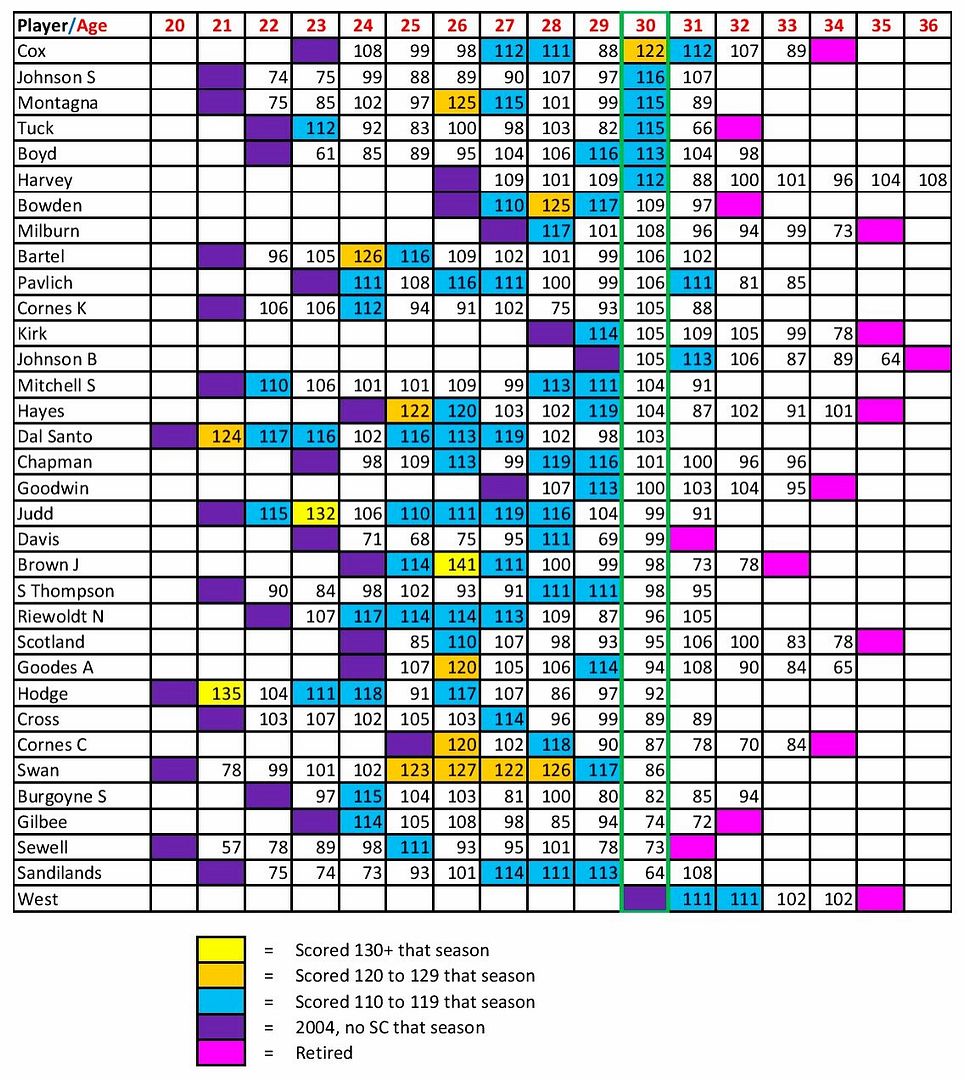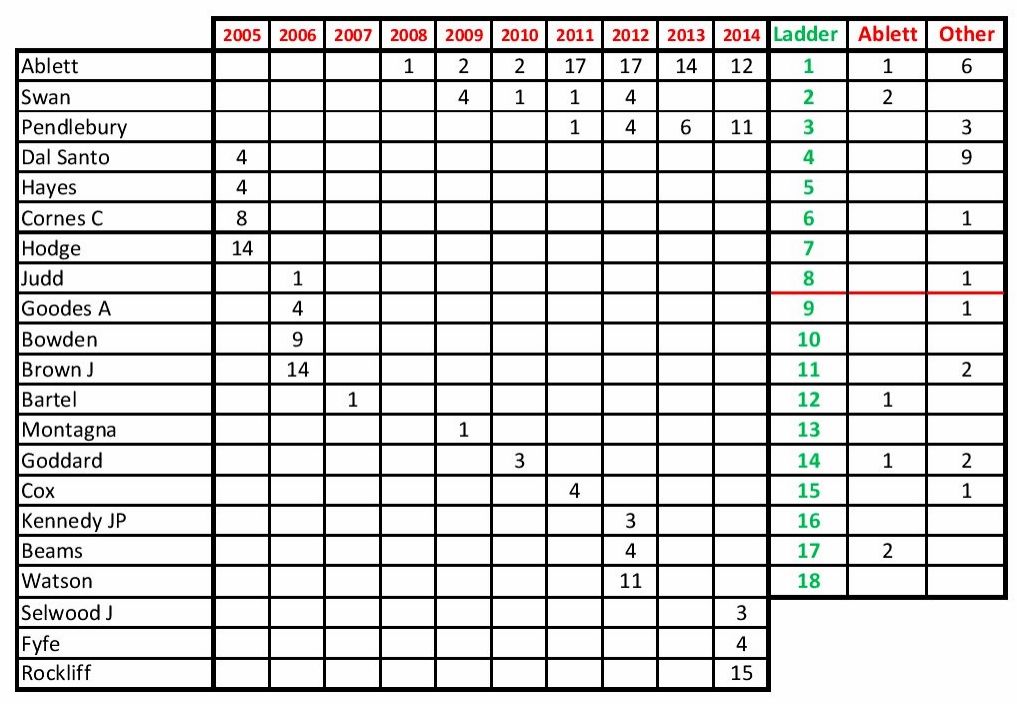I did some research on this in 2012 (I think, or early 2013).
I looked at players 29 years and older, and started with how they scored when they were 28. Here is the summary of how it looked:
At 28, 63 players involved, they played in 82.8% of the available games, and averaged 87.8 in SC
At 29, 63 players involved, they played in 83.2% of the available games, and averaged 85.9 in SC
At 30, 42 players involved, they played in 79.0% of the available games, and averaged 82.2 in SC
At 31, 22 players involved, they played in 75.9% of the available games, and averaged 85.7 in SC
At 32, 14 players involved, they played in 77.1% of the available games, and averaged 87.2 in SC
At 33, 4 players involved, they played in 74.0% of the available games, and averaged 90.4 in SC
Now, the problem with this analysis is, it only looks at age. It is quite conceivable, that say 3 of the 4 players that averaged 90.4 between them when they played at 33, had actually averaged say 98 at 33, so it doesn't account for how the individuals themselves went in their scoring as they got older. It is more reliable in predicting that older players will miss approximately 2 more games per season than they previously did.
So how does the individuals score deteriorate with age?
Here is a table that shows every player that has scored 110+ in a season of SC, AND played at least one season at the age of 30 or higher.
Keeping in mind, these are mostly players coming off a higher level. The further you have to fall, the more likely you will fall!
There were 29 of these players that played in SC seasons at both 27 and 28.
Overall they averaged 105 at 27, and 13 of the 29 increased their SC average the following year. The average of the 29 players did not change at 28, as they averaged 105 again the next season.
There were 31 of these players that played in SC seasons at both 28 and 29.
Overall they averaged 105 at 28, and 9 of the 31 increased their SC average the following year. The average of the 31 players dropped to 100 the next season.
There were 32 of these players that played in SC seasons at both 29 and 30.
Overall they averaged 100 at 29, and 13 of the 32 increased their SC average the following year. The average of the 32 players dropped to 99 the next season.
There were 28 of these players that played in SC seasons at both 30 and 31.
Overall they averaged 101 at 30, and 9 of the 28 increased their SC average the following year. The average of the 28 players dropped to 95 the next season.
There were 16 of these players that played in SC seasons at both 31 and 32.
Overall they averaged 99 at 31, and 5 of the 16 increased their SC average the following year. The average of the 16 players dropped to 96 the next season.
There were 13 of these players that played in SC seasons at both 32 and 33.
Overall they averaged 97 at 32, and 4 of the 13 increased their SC average the following year. The average of the 13 players dropped to 92 the next season.
There were 8 of these players that played in SC seasons at both 33 and 34.
Overall they averaged 93 at 33, and 3 of the 8 increased their SC average the following season. The average of the 8 players dropped to 85 the next season.
There appears to be a pattern for the players with a higher scoring history, that in any given season, the players over 30 will drop a combined 5/game from their average, but a third of them will actually increase their average from the previous season.


